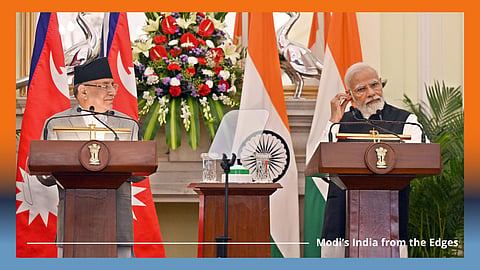Modi’s foreign policy has expanded India–Nepal economic ties but border and socio-political contests persist
This story is part of ‘Modi’s India from the Edges’, a special Himal series presenting Southasian regional perspectives on Narendra Modi’s decade in power and possible return as prime minister in the 2024 Indian election. To read the series and support Himal’s work on it, click here.
AT THE START of his book Kathmandu Dilemma: Resetting India-Nepal Ties, Ranjit Rae, a former Indian ambassador to Nepal, revisits a question that the Indian prime minister, Narendra Modi, posed to him in 2015. Nepal had just suffered a devastating earthquake that had killed thousands, and India had rushed to its aid with money, materials and men for relief and rescue. But the Indian media’s insensitive and jingoistic coverage of the crisis upturned the goodwill Indian relief efforts had generated. “Why don’t they like us?” Modi had asked Rae, revealing the depths to which India–Nepal ties had sunk in Modi’s second year in power.

